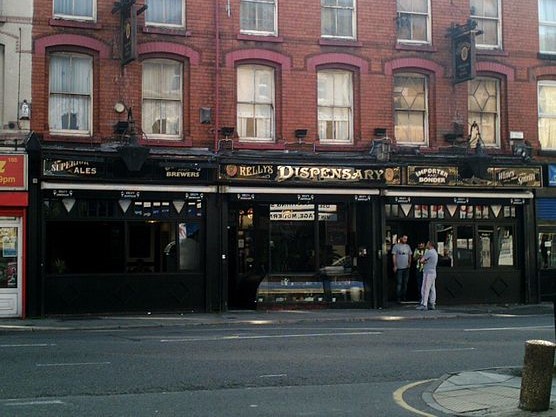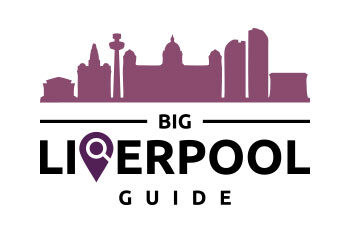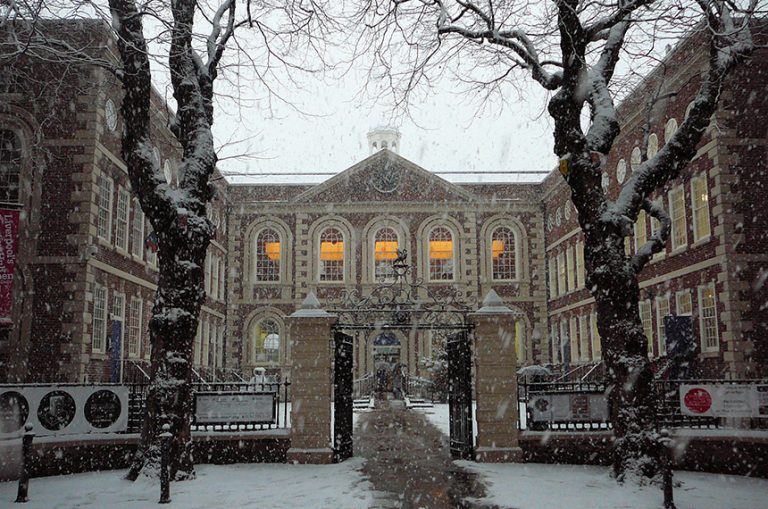How Liverpool’s Irish Migrants Helped Shape The City

Liverpool’s Docks circa 1910 | source: Wiki Commons
How Liverpool’s Irish Migrants Helped Shape The City
Liverpool’s history is built on the back of immigrants and refugees who’ve helped build the incredible city that stands today. Here at Signature Living, we wanted to celebrate National Refugee Week (18th-24th June) by exploring the migrant community that shaped Liverpool more than any other.
Although the historic Irish immigrants to Liverpool were not, strictly-speaking, refugees many of those who arrived in this city came to our shores because of economic or political strife at home, facing severe poverty and even starvation. They’re a perfect representation of how migrants and refugees from all over the world can shape and improve our cities for the better.
Today, an estimated 75% of Liverpool’s population have some Irish ancestry. They’ve played a major role in our city, from helping name our streets to building some of the most iconic landmarks in Liverpool. Here’s a brief history of Irish migration to Liverpool, and how it helped to shape the city into what it is now.
The ‘Second Capital of Ireland’

Before the huge influx of migration hit Liverpool’s shores during the years of the Great Famine, an Irish community was already well established in the city. Around 49,000 Irish migrants already lived in Liverpool by 1841. When the Irish potato famine began, in 1845, an estimated 1.5 million desperate people crossed the Irish Sea in ‘coffin ships’ headed for Liverpool.
Often, by the time they arrived in the city, a third of passengers had succumbed to disease and hunger. Three quarters of Irish Immigrants who arrived in the city then boarded ships to America, but some 35,000 remained in Liverpool.
Prejudices faced by the Community
The influx of Irish migrants into Liverpool faced harsh prejudices from local Liverpudlians. Common fears expressed by locals included that the Irish immigrants would take jobs which should have been given to local English people and that they would exercise significant political control over the city by voting in Irish representatives.
An article of 1931 in the paper The Liverpool Review reported that the influx of Irish immigrants was causing “grave injury… to the prosperity of Merseyside and to its population“.

Job opportunities in the city were scarce. Irish immigrants took heavy labour jobs on the docks or in the processing and refining plants that surrounded the waterfront. They were often confined to low-pay jobs.
For Irish women, work was even harder to find. Many locals were reluctant to employ Irish women as domestic servants, often advertising for roles with the caveat ‘No Irish Need Apply’.
What Irish Immigration Did For Liverpool
But against the appalling odds, the Irish Immigrants to Liverpool made a huge impact on the city, shaping it into the beautiful and exciting place that is it today.
The Docks

Most of the seven and a half mile docks in Liverpool were dug by Irish immigrants. Called ‘Navvies’, the Irish labourers were renowned for working efficiently over long periods.
The Navvies were famed for digging out and building hundreds of miles of canals and railways across England, alongside numerous other large scale engineering projects.
Without them, we wouldn’t have our famous Albert Docks.
The Accent
The Scouse accent is a fairly recent addition to the voices of Liverpool’s inhabitants – up until the 19th century, Scousers spoke in the same accent as their Lancastrian neighbors.
It was the influence of many immigrants in the port city over the 19th century that seems to have built the foundations of the distinctive Scouse accent, particularly Welsh and Irish.
When the Irish first began populating the streets of Liverpool, their strange accents were met with amusement and derision. Newspapers accused them of having “slip-shod vowels and muddied consonants”.
But now, combined into the Scouse accent, it’s seen as part of the city’s proud heritage.
Our Iconic Buildings
The buildings that house Central Library and the World Museum are a spectacular part of Liverpool’s architectural landscape.

But did you know they were funded and built by an Irish immigrant to the city? William Brown, born in Ballymena, was a wealthy banker and MP who funded the construction of the museum and library. At the cost of £40,000, he called it “a gift to the people of Liverpool”.
The Metropolitan Cathedral of Christ the King is another famous Scouse landmark that can owe its existence to Liverpool’s Irish population.

Built specifically to serve the Irish Immigrant community and their strong Catholic faith, the original plans for the cathedral envisioned a building bigger than the huge Anglican Cathedral that sits at the other end of Hope Street.
The 1930s design, by Sir Edwin Lutyens, would have been the second largest cathedral in the world. Building stopped, however, after the crypt was built and a scaled-down, modernist design was installed instead. The building’s nickname reflects the original purpose of the building – locals call it Paddy’s Wigwam.
Our Hospitals and Welfare Organisations
A number of Irish immigrants to Liverpool made significant impacts caring for the poor and ill in the city. The renowned Agnes Jones, from County Donegal, was the first trained Nursing Superintendent of Liverpool Workhouse Infirmary. Famed for her work ethic, Agnes died at 35 years old from typhus. Florence Nightingale described Agnes as “one of the most valuable lives in England”.

Kitty Wilkinson, an Irish immigrant from Londonderry, was nicknamed Liverpool’s ‘Saint of the Slums’ because of her educational campaigning to teach the public about health and hygiene.
The only person in her Liverpool neighbourhood to own a boiler during the 1832 cholera epidemic, Kitty invited all those with infected bedding and clothing to use it, saving countless lives. Soon after, she opened the first public washhouse in Liverpool.

And even later on in Liverpool’s history, Irish immigrants continued to contribute to the healthcare of the city. In the post-war years of the 50s, many of the NHS’s nurses were Irish immigrants. By 1971, estimates suggested that 12% of all British Nurses were Irish nationals.
Place Names and Streets in Liverpool
Many of the roads and areas around Liverpool have been given their name due to Irish connections. The area of Anfield can trace its name back to the old town of Annefield in New Ross, County Wexford.

Documents from over 150 years ago suggest that Robert Graves, a former city mayor from 1860-1861, and wealthy shipping magnet, bought land in the area and called it Annefield Farm, after his childhood home, in Ireland. This was then shortened over many years to the version Anfield that is now a famous name all over the world, thanks to the football club.

And Ulster Road, Munster Road, Belfast Road, Killarney Road and Donegal Road are all street names in the Old Swan area of the city.
Famous Pubs and Paddy’s Day
Liverpool’s Paddy’s Day celebrations are world renowned, and the city is often called the ‘Capital of Ireland’ because of the rich history of Irish immigration here.
At the heart of the Irish celebrations that take place every year on 17th March are the historic Irish pubs that have served the immigrant communities, and more recently all Scousers, for years.

Famous old pubs include Kelly’s Dispensary on Smithdown Road and Shenanigans, on Tithebarn Street, which can trace it’s history back to 1841.
Interested in how Irish Pioneers shaped Liverpool? Read more on how specific immigrants helped the city here.
Celebrate Ireland’s connection with Liverpool by visiting some of the best Irish bars in the city. From The Liffey to Pogue Mahone, you’re spoilt for choice with Irish pubs around Liverpool.


